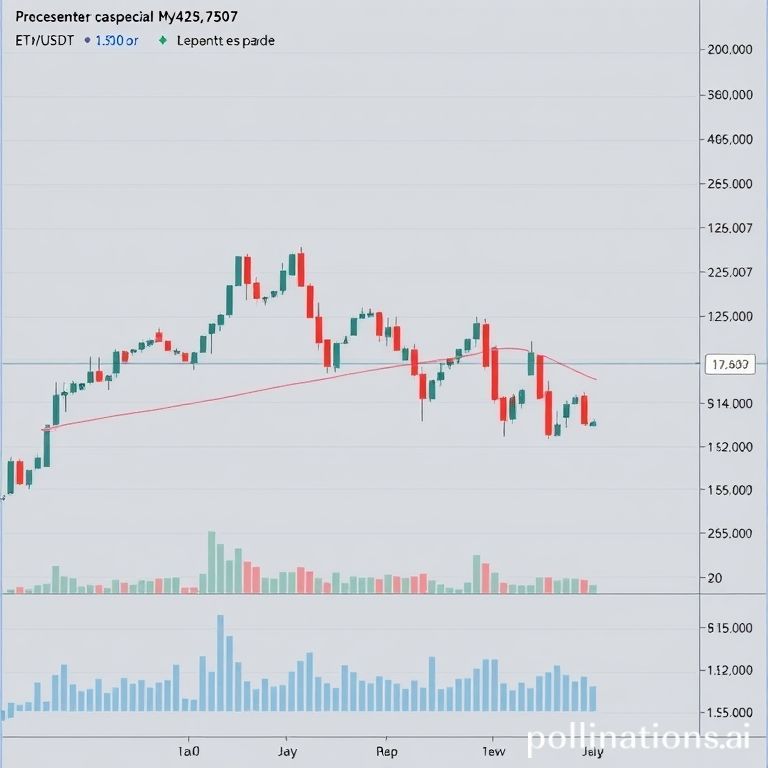
In a financial debate that has captured significant attention within the cryptocurrency community, Andrew Kang, co-founder of Mechanism Capital, recently launched a robust and sharply worded critique against Tom Lee’s latest investment thesis on Ethereum. Kang, known for his incisive market commentary, did not mince words, characterizing Lee's arguments as "one of the most retarded combinations of financially illiterate arguments I’ve seen from a well known analyst in a while." This direct challenge, articulated across various platforms, specifically targeted five foundational pillars underpinning Lee’s bullish stance on Ethereum: the anticipated adoption of stablecoins and real-world assets (RWA), the comparison of Ethereum to "digital oil," the premise of institutional buying and staking of ETH, the idea of Ethereum’s equivalence to all financial infrastructure companies, and Lee’s technical analysis.
Deconstructing Lee's Pillars: A Point-by-Point Rebuttal
Kang’s central line of attack zeros in on the notion that a surge in tokenization and stablecoin transactions should inherently translate into substantial fee generation for the Ethereum network. While acknowledging the exponential growth in tokenized asset value and stablecoin transaction volumes since 2020, Kang pointed out a critical disconnect: "fees are practically at the same level as in 2020." He attributed this surprising divergence to several factors, including significant "Ethereum network upgrades making tx’s more efficient," the migration of activity "to other chains," and the fundamental reality that "tokenizing low-velocity assets doesn’t drive much fees." To underscore his argument, Kang offered a compelling analogy: "Someone could tokenize a $100m bond and if it trades once every 2 years… A single USDT would generate more fees." This highlights his view that raw asset value or volume doesn't equate to fee accrual in the manner Lee suggests.
The Competitive Landscape and Fee Capture
Beyond internal network dynamics, Kang extensively highlighted the intensifying competitive pressures facing Ethereum. He asserted that a substantial portion of future fees would likely be "captured by other blockchains with stronger business development teams." In this context, he specifically named "Solana, Arbitrum, and Tempo" as platforms already securing "most of the early big wins" in this evolving landscape. Furthermore, he emphasized a strategic move by Tether, the issuer of the largest stablecoin, which is actively supporting "two new Tether chains, Plasma and Stable." Kang argued that these new chains are "explicitly intended to route USDT volume to Tether-controlled rails," thereby diverting potential fee revenue away from Ethereum and towards rival ecosystems.
Challenging the 'Digital Oil' Analogy
Kang also took aim at Lee's characterization of Ethereum as "digital oil," dismissing it as an analytically weak analogy. He contended that "Oil is a commodity… real oil prices adjusted for inflation have been trading in the same range for over a century with periodic spikes that revert." While conceding that ETH "could be viewed as a commodity," Kang was quick to add, "but that’s not bullish." His argument implies that if Ethereum behaves like a typical commodity, its price dynamics might be subject to the same cyclical and range-bound movements, rather than the exponential growth projected by Lee based on this comparison.
Institutional Adoption: A Misunderstood Premise?
One of Lee's core tenets suggests that traditional financial institutions, such as banks and large corporations, would accumulate and stake ETH – either to secure tokenization networks or as operational capital. Kang vehemently challenged this premise, suggesting it misunderstands fundamental corporate treasury behavior and the mechanisms of value accrual. He posed rhetorical questions: "Have large banks… bought ETH on their balance sheet yet? No. Have any of them announced plans to? Also no…" To further illustrate his point, Kang drew parallels: "Do banks stock up on barrels of gasoline because they continually pay for energy? No… Do banks buy stocks of asset custodians they use? No." For Kang, the idea that demand from institutional staking would be a primary driver for Ethereum's valuation represents a significant "category error," fundamentally misinterpreting how such entities manage their assets and operational expenses.
Technical Analysis and Valuation Dynamics
In his assessment of Ethereum's price dynamics, Kang presented an objective view of its chart. He observed that "the strongest observation is that Ethereum is in a multi-year range… we recently tapped the top of the range, failing to break resistance." This led him to speculate that one "would not discount the possibility of a much longer $1,000–$4,800 range." Furthermore, he noted that "Long-term ETH/BTC is indeed in a multi-year range, but the last few years have mostly been dictated by a downtrend." Kang concluded that "The ethereum narrative is saturated and fundamentals do not justify valuation growth."
Kang’s critique culminated in a stark assessment of Ethereum’s intrinsic value proposition, arguing that "Ethereum’s valuation comes primarily from financial illiteracy… [which] can create a decently large market cap." However, he cautioned that "the valuation that can be derived from financial illiteracy is not infinite." His final, somewhat pessimistic outlook suggested that "Unless there is major organizational change it is likely destined to indefinite underperformance."
A Contrasting Outlook: Tom Lee's Bullish Targets
In sharp contrast to Kang's skeptical analysis, Tom Lee's thesis has consistently highlighted Ethereum's robust suitability for Wall Street's tokenization efforts and its foundational role as a "neutral chain." Lee's optimistic projections include public price targets "clustered around $10,000–$12,000 by end-2025" and even an ambitious forecast of "up to $62,500" in a favorable super-cycle scenario. At the time of this publication, Ethereum traded near the $4,000 mark, underscoring the significant divergence between these two prominent analytical perspectives.
The ongoing debate between Andrew Kang and Tom Lee encapsulates the broader spectrum of views on Ethereum's future. While Lee envisions a transformative role for ETH in a tokenized financial world, driving exponential value appreciation, Kang offers a grounded, often critical, counter-narrative focusing on structural challenges, competitive threats, and what he perceives as fundamental misunderstandings of market dynamics and institutional behavior. This intellectual clash provides valuable insights for investors seeking to navigate the complex and often polarized landscape of cryptocurrency valuations.
